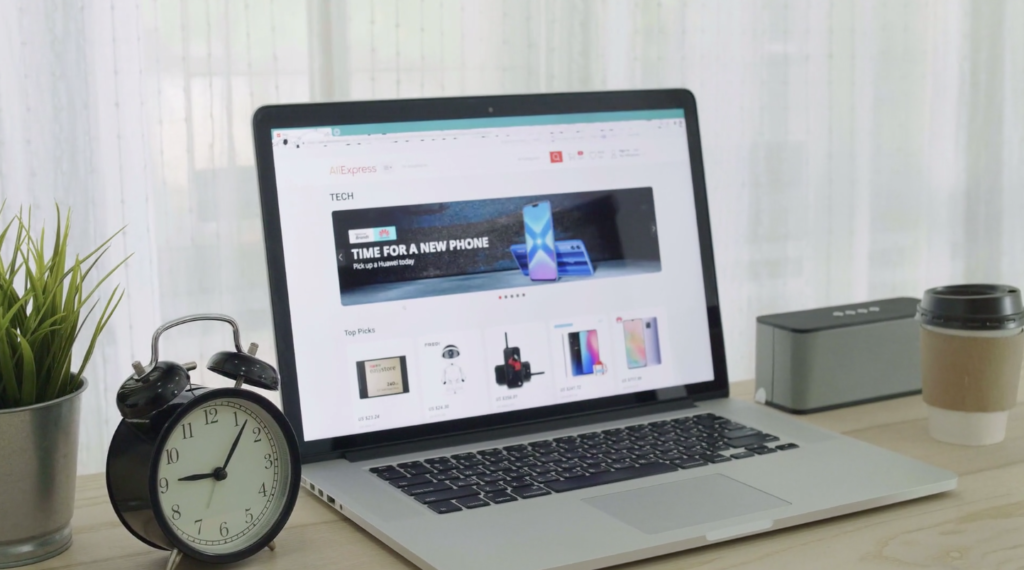
Most people understand that any modern website should include images in addition to text content and the basic graphics that comprise the navigation. Fewer people, however, really understand how and where to include images to create the most positive and memorable impression on every visitor.
Images are beneficial to just about every website and can be used in a variety of ways, and yet, achieving the right balance is more difficult than it appears. Images matter a great deal for branding, visitor engagement, and other important marketing factors.
For that reason and others, it’s useful to learn more about when, where, and how to use images on a website and in other types of marketing content.
When And Where To Use Images On A Website
Images can be used in a variety of different positions on websites. Headers usually include images consistent with the business’s branding as well as the logo. Below that, there may be images of the products or services offered by the business.
While images can be used to showcase offerings, this isn’t the only way for them to be used. They are also useful for the following:
- Illustrate Concepts – It can be hard to explain in words the details of how a complex product or service works, its dimensions, and other technical factors. Images can do this more efficiently and effectively. When offering unique products and services, it’s beneficial to include diagrams or illustrations that showcase informative details so visitors can make a purchasing decision with more confidence.
- Evoke Emotions – Photos can be used to evoke emotions, encouraging visitors to take action to avoid a situation or gain a more ideal state of being. Some websites might include certain photos designed to show why the visitor needs a product or service to solve a problem they are currently confronting or that they do not want to experience. By making the visitor feel like they need to act, the image can convince them to engage. Images can also be used to communicate positive emotions or evoke feelings of a more ideal state the viewer wishes to reach. They will then positively associate a specific product or service with a desired feeling or outcome.
- For User Engagement – It sounds simple but images give website visitors more to look at, which adds a special type of staying power to a webpage. Basic text content doesn’t attract and hold attention as well as that same text when it’s accompanied by rich media, including images and video. And when your website is mainly used for marketing and sales purposes, you only have a few seconds to capture and maintain a visitor’s attention so that you can engage and persuade them. Images are effective for doing this and for increasing the amount of time they stay on a specific page. This is favorable for individual visitor interactions and for your website’s overall rankings in search engines.
Even with their general benefits, it’s not enough to add more images to your web pages and wait for the results. Images can impact the visitors positively or negatively, depending on what they portray and how they’re used.
This is part of the reason why it’s best to choose high-quality images that showcase what the business has to offer. Low-quality images or those that aren’t relevant to what is being offered can be worse than not including images at all.
Images that appear unprofessional or out of place can make a company appear as though they don’t care what the visitor is experiencing or that they aren’t capable, which will easily send a potential customer to a competitor’s website.
Properly placed, high-quality images, which are chosen carefully for the impact they’ll have, can help keep visitors on the website and boost conversion rates.
Websites With Versus Without Images
There are a lot of differences between websites that have properly placed, high-quality images and those that don’t have any images, or that only have a minimal amount. Visitors are not likely to spend a lot of time on websites that do not have images.
Even if they are looking for detailed text-based information to help them make a purchasing decision, any images or diagrams that can assist or direct them will create a powerful impression. It’s an opportunity to show off expertise, which can have a big impact on a brand and how it’s perceived.
If a website does have high-quality images, it’s likely the dwell time will increase. Visitors will spend more time looking at the images and will likely spend more time on a specific webpage. Images can also impact optimization in other ways.
Optimizing the images through their filenames, captions, and other methods can help boost rankings for certain related keywords.
When it comes to product catalogs online, having images can make a huge difference. Most people are not going to want to purchase something if they can’t see what it looks like or get a sense of all the features being offered.
This is still the case with commodity items or products with which buyers may already be familiar. Visitors are far more likely to make a purchase if they can see what they’re getting and how the specific provider showcases that product.
Quality, Quantity, And Position Matter
When choosing images for a website, there are three key components to remember. They are quality, quantity, and position.
- Quality – Only high-quality images should be used on the website. These images should appear professionally shot and edited, so they are clear, easy to view, and communicate reputability. Avoid over-pixilated photos, blurry photos, or images that appear amateurish in terms of their composition.
- Quantity – There is too much of a good thing when it comes to images on a website. The website should look balanced. This means that it should include written content as well as visual media, including static images and video. Excessive images on a website can become overwhelming and create technical problems on certain displays or for visitors relying on internet connections at slower speeds. It’s important to avoid cluttering any one page on the site and to ensure all users can access the information with ease and clarity.
- Position – Images should be properly positioned so they appear to be a cohesive part of the layout. They should be used to balance text-based content and other page features without distracting or interfering with any vital information. Without a careful layout, the website will look amateurish and will interfere with the visitor’s experience.
More Ways To Use Images For Marketing
How you use images can have a big impact on your marketing efforts, as their reach will extend beyond the pages where they are featured. Image-based search engines can help drive more visitors to the website, so optimizing images to work with these sites can be beneficial.
Images can also be used on image-sharing sites for brand awareness or to attract new visitors, as well as on social networks where they can help businesses connect with their customers.
In these ways, photos and graphics can become more important than text-heavy content because they’re more eye-catching. On social networks, images are a crucial way to get the attention of potential customers, as many people will simply scroll past text-based posts.
The best way to handle social networking sites is to use a combination of text and images. Images can capture the viewer’s attention more efficiently, prompting the viewer to get more information through the text.
This can then be used to encourage them to follow a path to conversion, usually by traveling from the post to your website. A high-quality, attention-grabbing image can be the first step in making that happen.
DIY And Pro Options For Adding New Images
New, original images are a much better option for branded and marketing websites. Stock photos or royalty-free photos already used elsewhere could be recognized by the visitor.
This may not seem like a major issue until they see that same image used by your competitor. At the very least, this will make your company and your brand lose a lot of distinction, which is very unfavorable when establishing what makes your company uniquely valuable to a customer.
While stock images can offer some value, avoid using them wherever possible by shooting or editing images so they are original. The modern availability of digital cameras and photo editing software has made this easier than ever, but it does take time and skill to use these resources effectively.
For the most professional-looking results and for images that will be most effective in a marketing and branding capacity, the best option is to consult with a professional. Even if you shoot and submit your own photos, a professional graphic designer or media expert can elevate them to a professional level.
This can be done quickly when the right tools are skillsets are employed. While cost is a concern, it’s important to view professionally created marketing images as an investment for building your brand and gaining more customers.
Ultimately, every website should be utilizing the power of visual media to create a more engaging experience. Professionally created, properly integrated images are part of accomplishing that and gaining the benefits.



